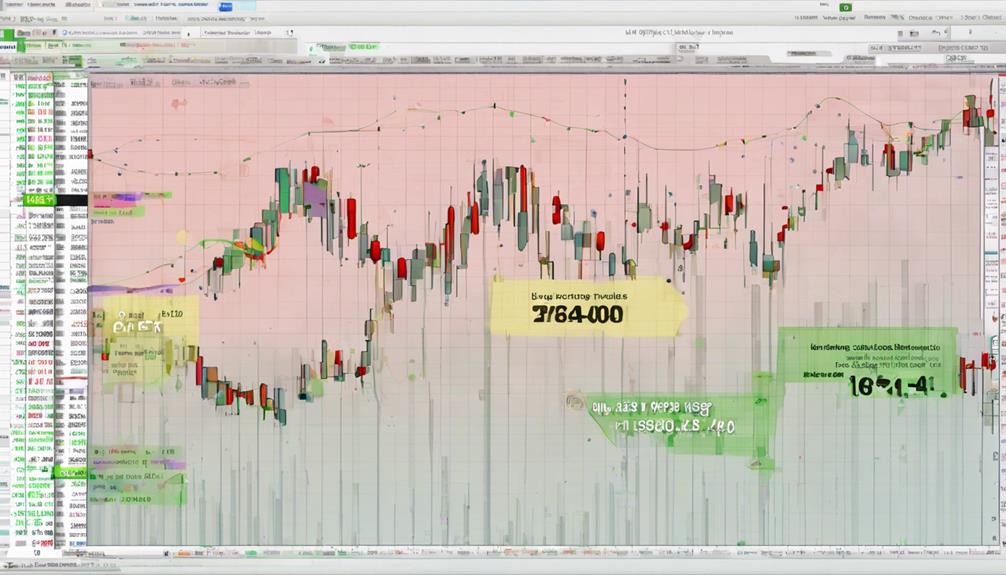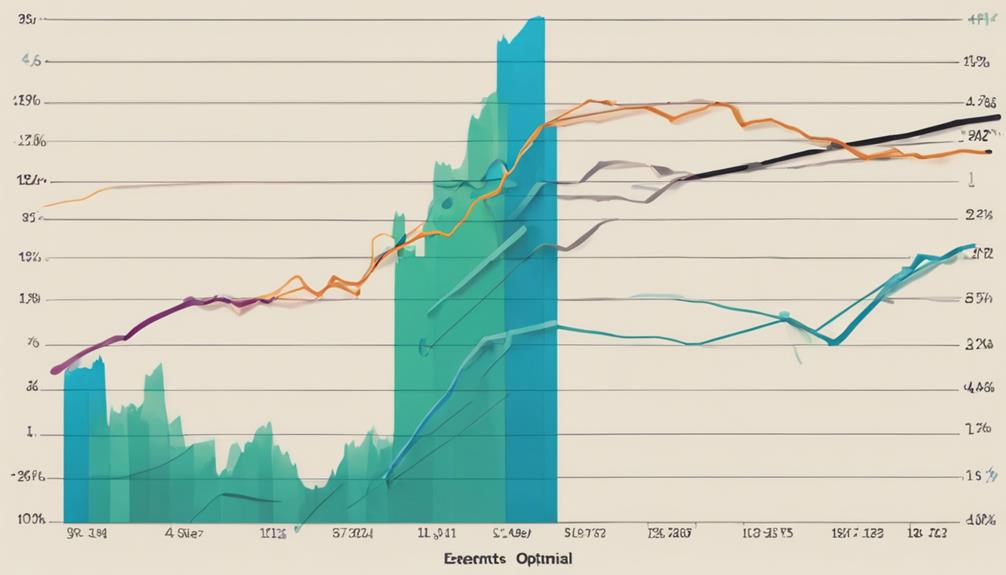As you step into the realm of navigating moving averages, imagine them as guiding lights in the foggy terrain of financial markets, illuminating potential paths for your trades.
But what are these three best ways that can help you effectively harness the power of moving averages in your trading endeavors?
Stay tuned to uncover practical insights on:
- Leveraging different types of moving averages.
- Refining your trading strategies.
- Selecting the optimal length for maximum impact on your market decisions.
Types of Moving Averages
What distinguishes the various types of moving averages used in technical analysis?
Moving averages come in different forms, each with its unique characteristics. The Simple Moving Average (SMA) smooths out price data over a specific period, offering a clear trend indication.
On the other hand, the Exponential Moving Average (EMA) gives more weight to recent prices, making it more responsive to current market conditions.
Weighted Moving Average (WMA) assigns different weights to prices, increasing sensitivity to recent data points.
Smoothed Moving Average (SMMA) reduces noise and volatility through a smoothing technique.
Lastly, the Adaptive Moving Average (AMA) adjusts sensitivity based on market volatility, making it adaptable to changing conditions.
Understanding these types of moving averages is crucial for effective technical analysis.
Trading Strategies With Moving Averages

Utilizing moving averages in trading strategies provides traders with valuable insights into market trends, support, and resistance levels. By analyzing crossovers such as the Golden Cross and Death Cross, traders can anticipate potential trend shifts.
Adjusting the moving average length can enhance the accuracy of buy and sell signals, aiding in decision-making. Incorporating multiple moving averages helps validate trends and enables traders to make well-informed choices.
When combined with other technical indicators, such as volume or oscillators, moving averages can boost the effectiveness of trading strategies. Monitoring a moving average chart allows traders to visualize trends and identify key support and resistance levels for timely entry and exit points in the market.
What are the Best Ways to Utilize Moving Averages for Effective Navigation?
When it comes to grasping moving averages essentials, utilizing them for effective navigation can be impactful. By using moving averages to analyze trends and identify support and resistance levels, traders can make informed decisions. Additionally, combining different time frames of moving averages can further enhance navigation accuracy.
Selecting Optimal Moving Average Length

Choosing the optimal moving average length is a critical decision that significantly influences the effectiveness of your trading strategy. When deciding on the length of moving averages, consider factors like your trading style, time frame, and market conditions. Here are some insights to help you make the right choice:
- Shorter moving averages like the 10-day are more responsive to price changes, ideal for short-term traders.
- Longer moving averages such as the 200-day offer smoother trends but may lag behind current price movements, suitable for long-term investors.
- Adjusting moving average length can refine signals and adapt to different market conditions for improved trading decisions.
- Selecting the right moving average length is crucial for accurate trend identification and optimal trading strategy execution.
- Different lengths cater to various trading preferences, so choose wisely based on your goals.
What Are the Benefits of Using Moving Averages in Financial Analysis?
When it comes to financial analysis, grasping moving averages essential guide is crucial. By using moving averages, investors can identify trends and potential reversals in stock prices. This can help in making informed decisions and maximizing profit potential. Additionally, moving averages provide a clearer picture of an asset’s price movement over time.
Frequently Asked Questions
What Is the Best Strategy With Moving Average?
When using moving averages, focus on crossovers to spot trend shifts and entry/exit points. A Golden Cross, where the short-term average rises above the long-term one, signals a bullish trend, while a Death Cross indicates a bearish one.
What Is the 5 10 20 EMA Strategy?
To master the 5 10 20 EMA strategy, focus on the crossovers and relationships between these EMAs. Utilizing varying periods like 5, 10, and 20 days provides a comprehensive view of price movements, aiding in trend identification and adaptability to market shifts.
What Is the 5 8 13 21 EMA Strategy?
To implement the 5 8 13 21 EMA strategy effectively, watch for crossovers between these exponential moving averages. These EMAs help you identify trend changes, offering a balanced approach for short to medium-term trading decisions.
How Do You Know Which Moving Average to Use?
You choose the right moving average by considering your trading timeframe. Short-term traders go for 10 or 20-day averages, while long-term investors prefer 50, 100, or 200-day ones. Experiment with different lengths to match your style and market conditions.
Conclusion
Just as a ship relies on its compass to navigate the vast sea, traders can use moving averages as their guiding tool in the complex world of financial markets.
By understanding the different types of moving averages, implementing effective trading strategies, and selecting optimal lengths, traders can steer their way towards successful trading outcomes.
Let moving averages be your North Star in the turbulent waters of trading, guiding you towards profitable opportunities and informed decision-making.
